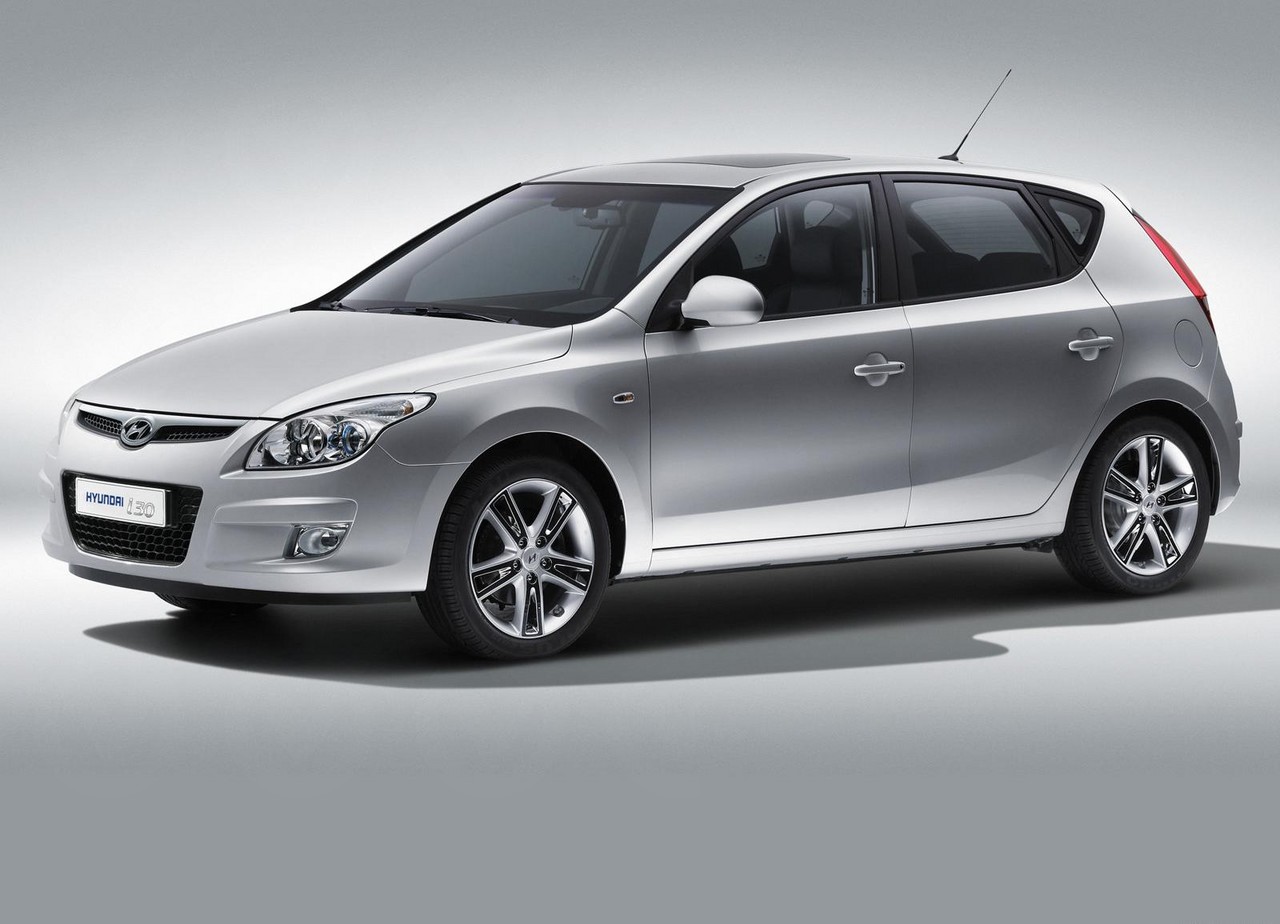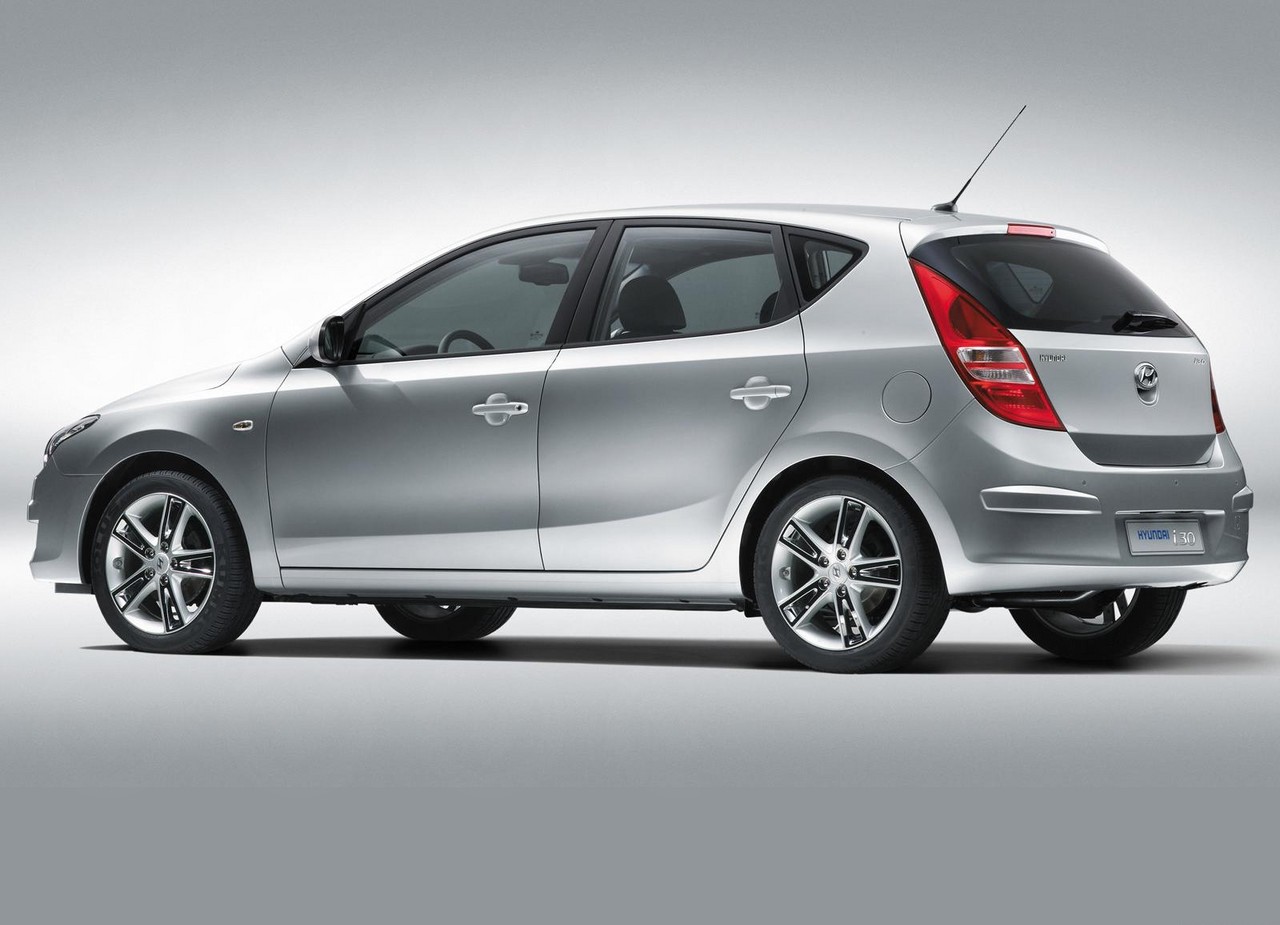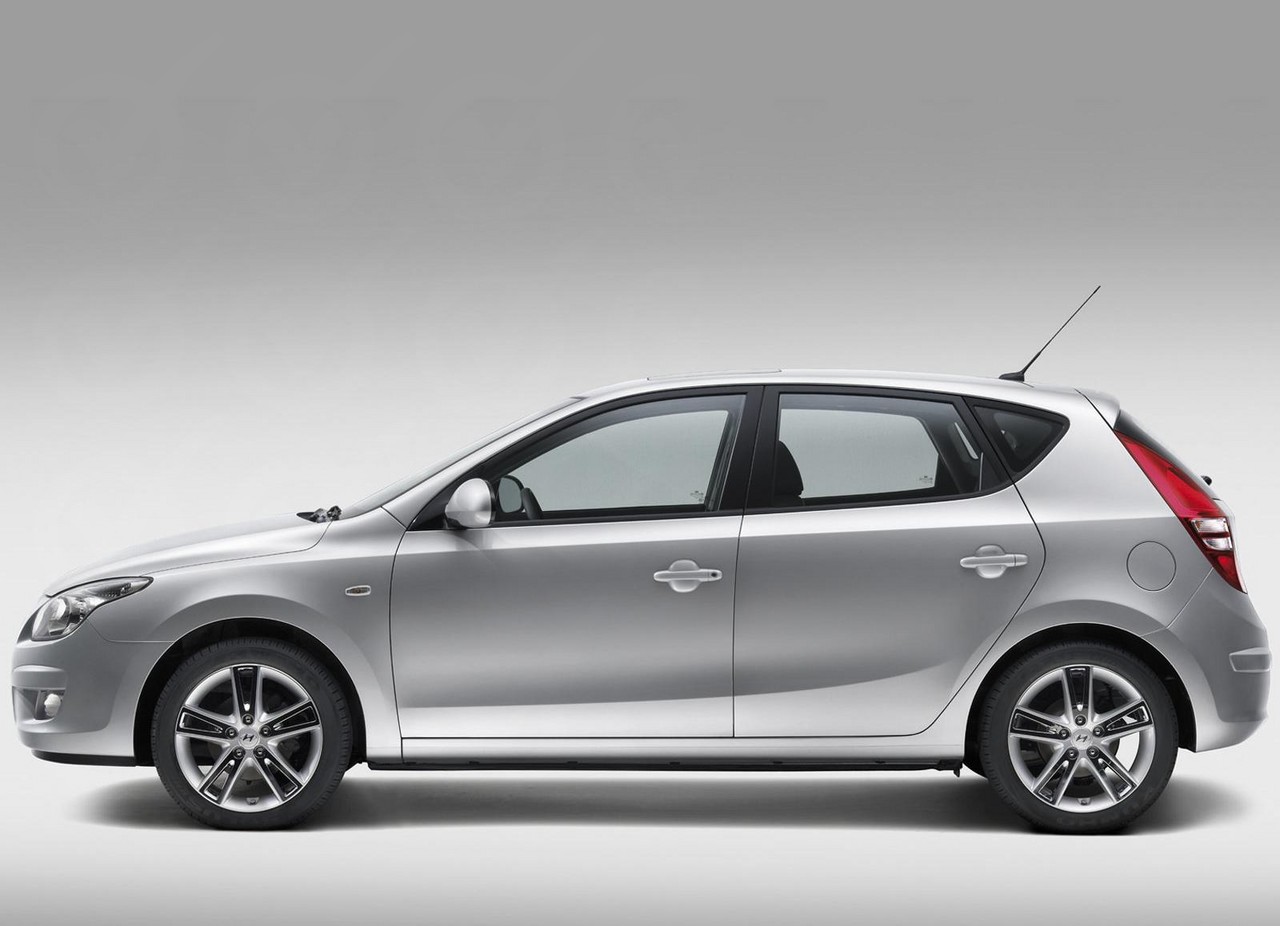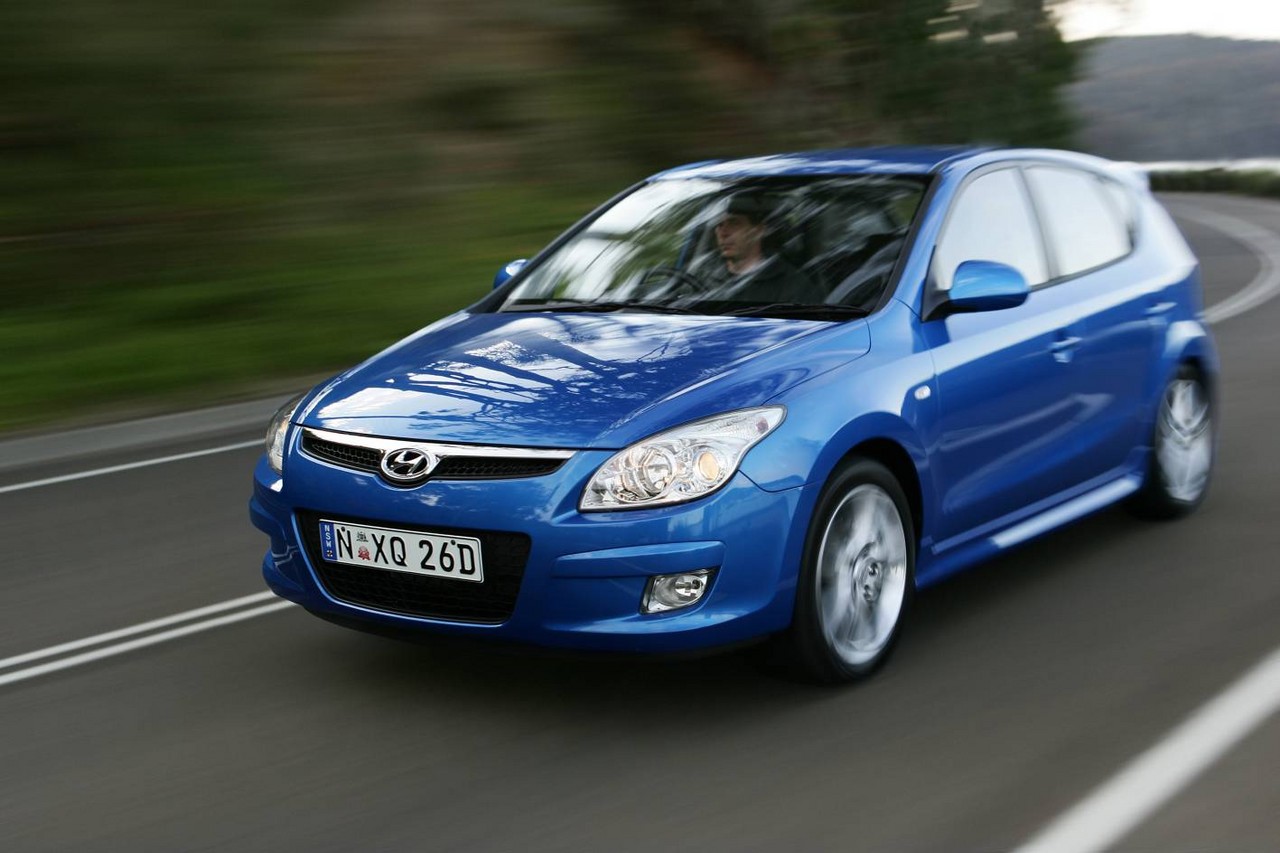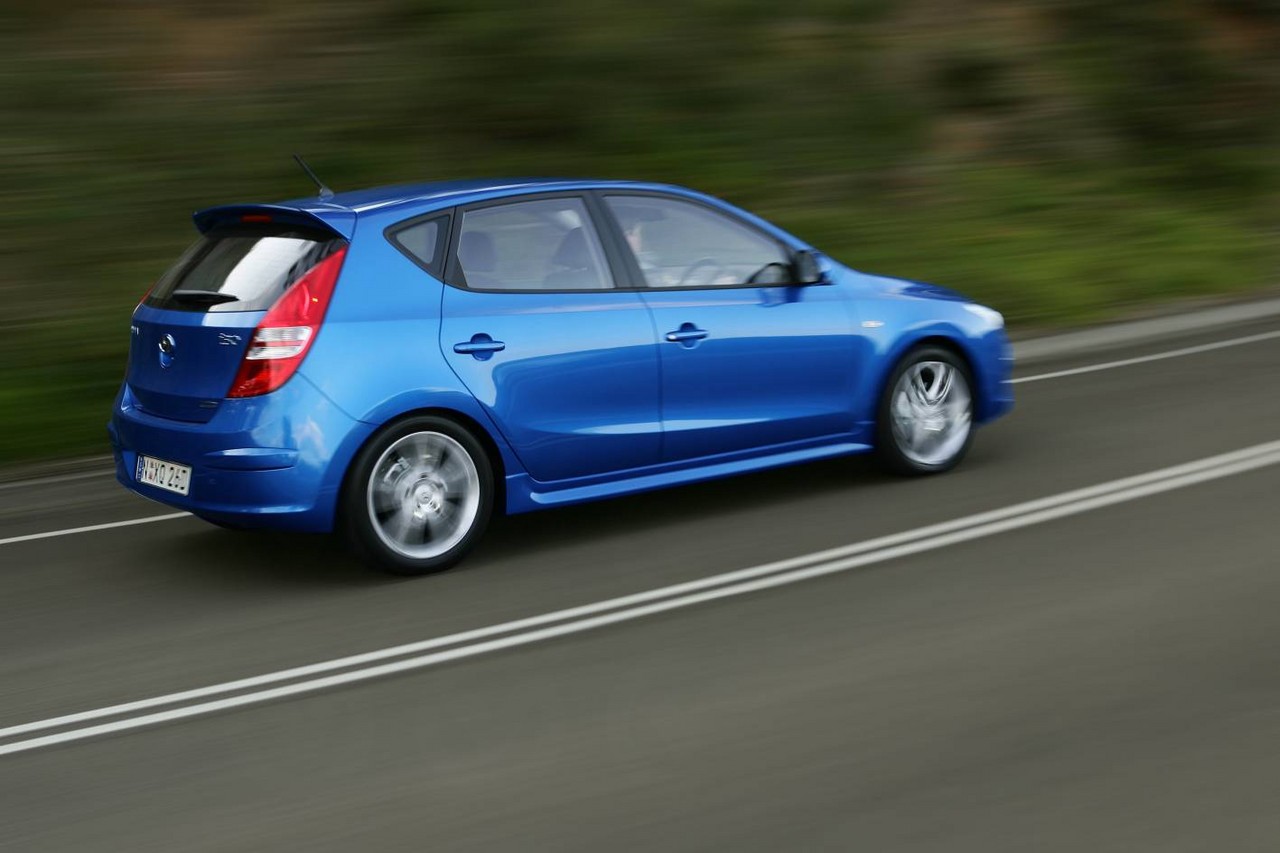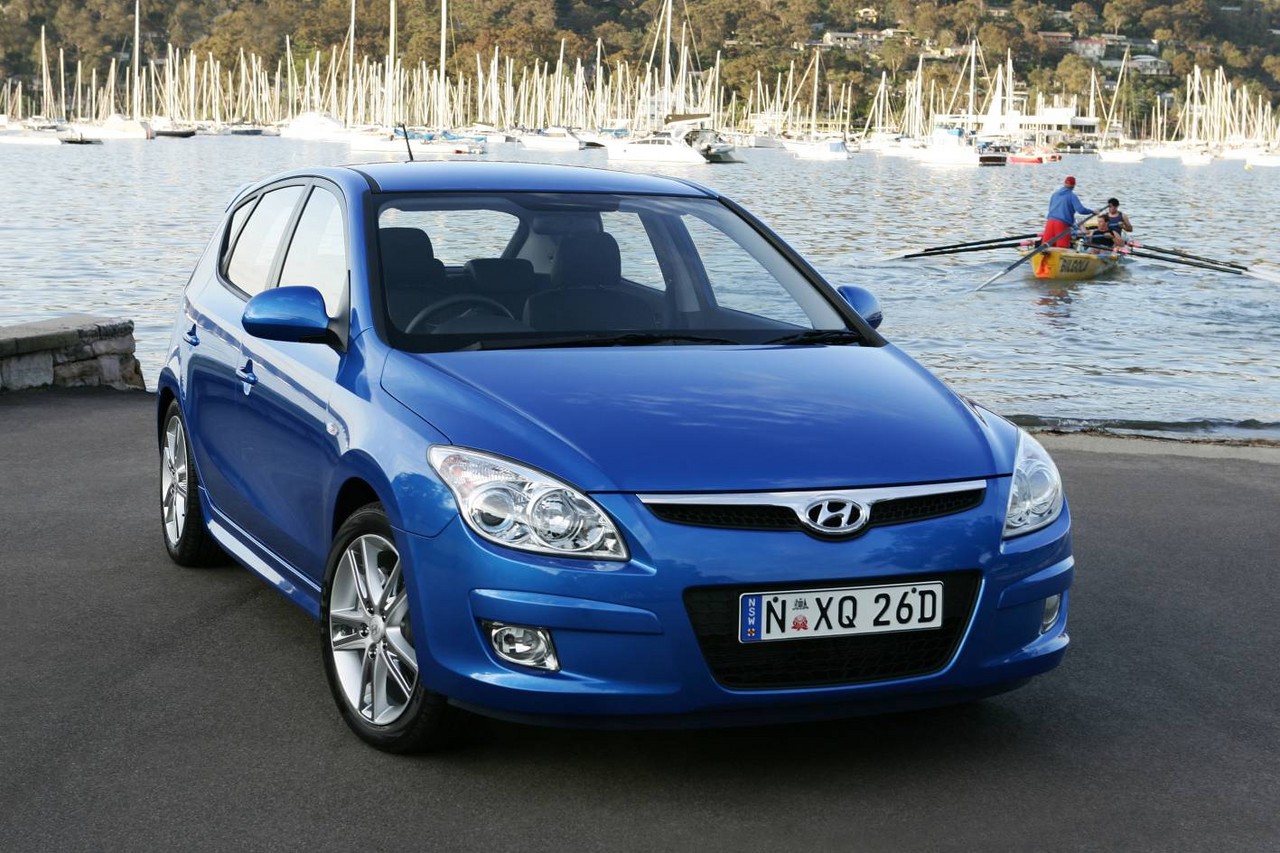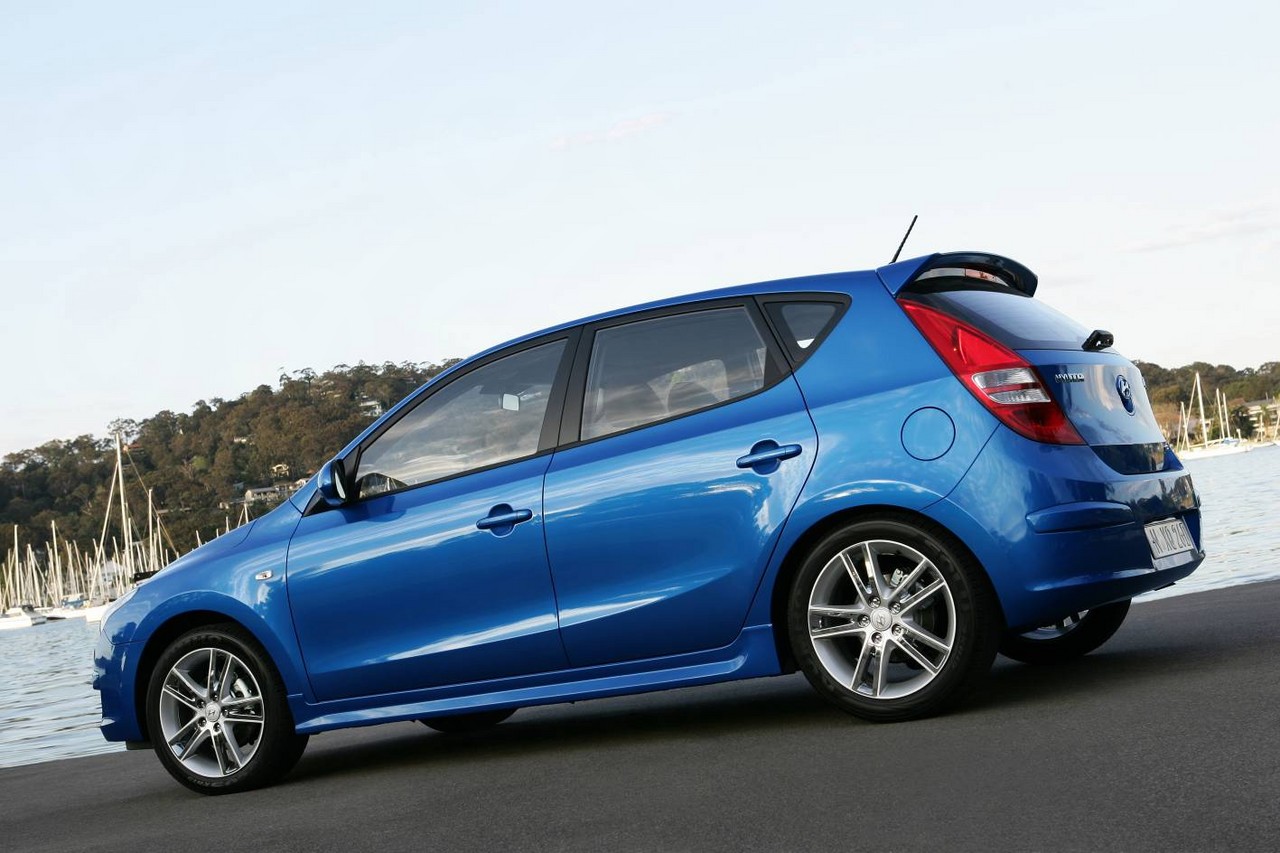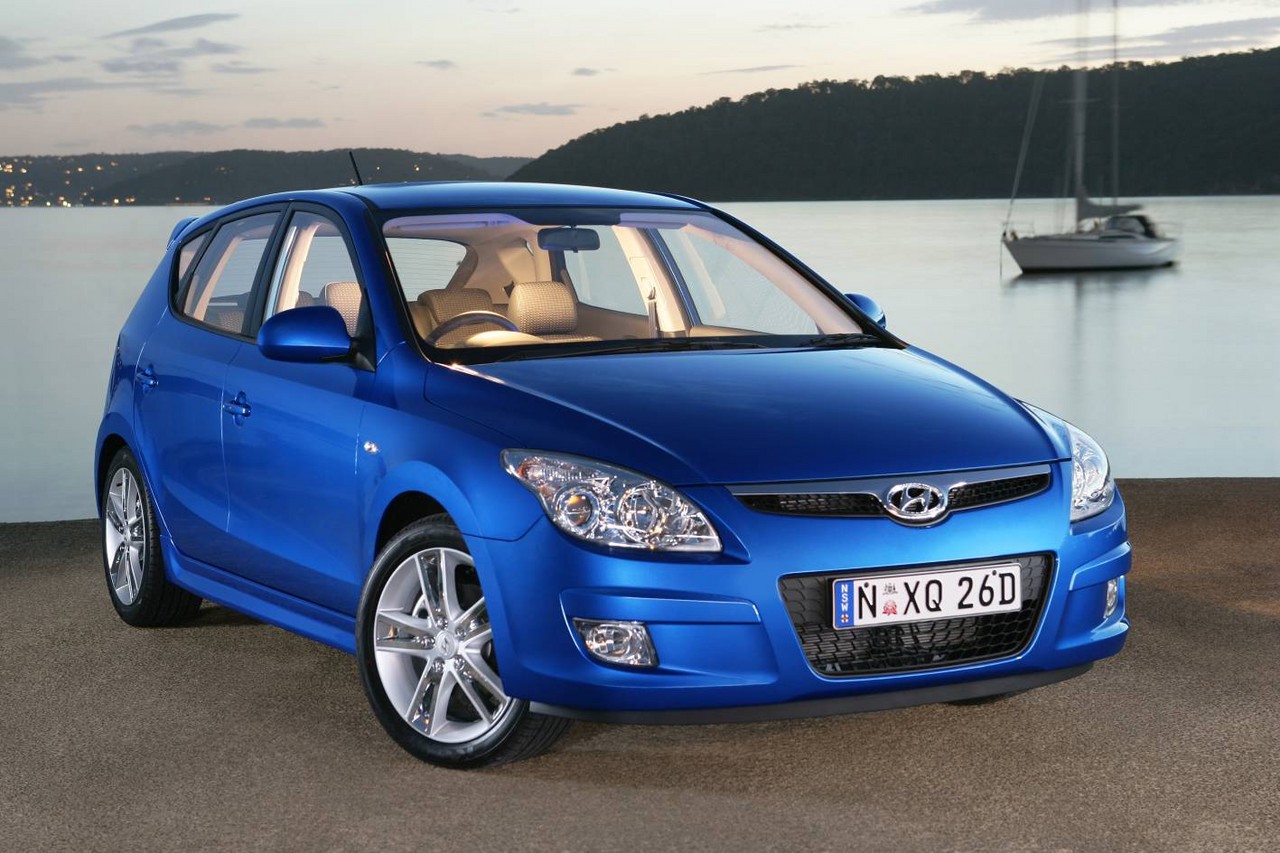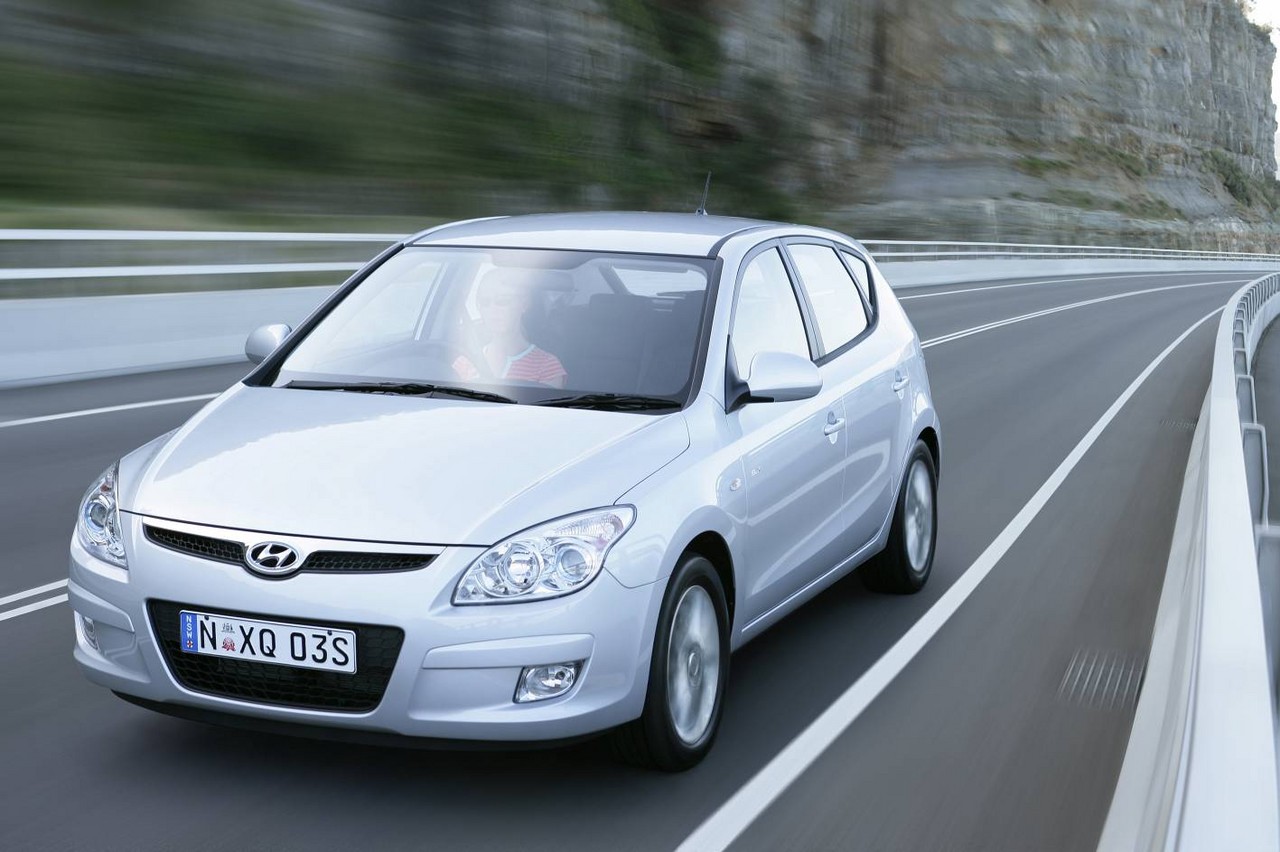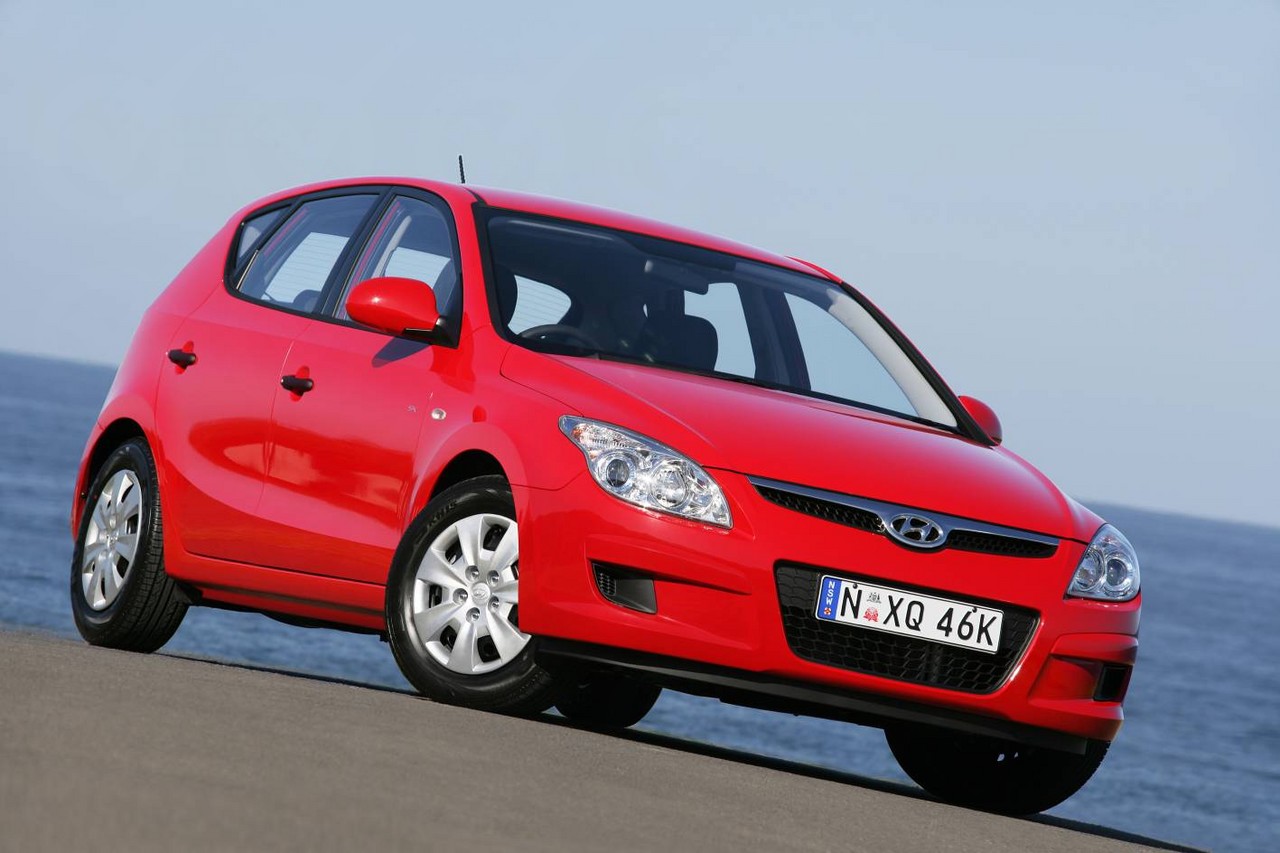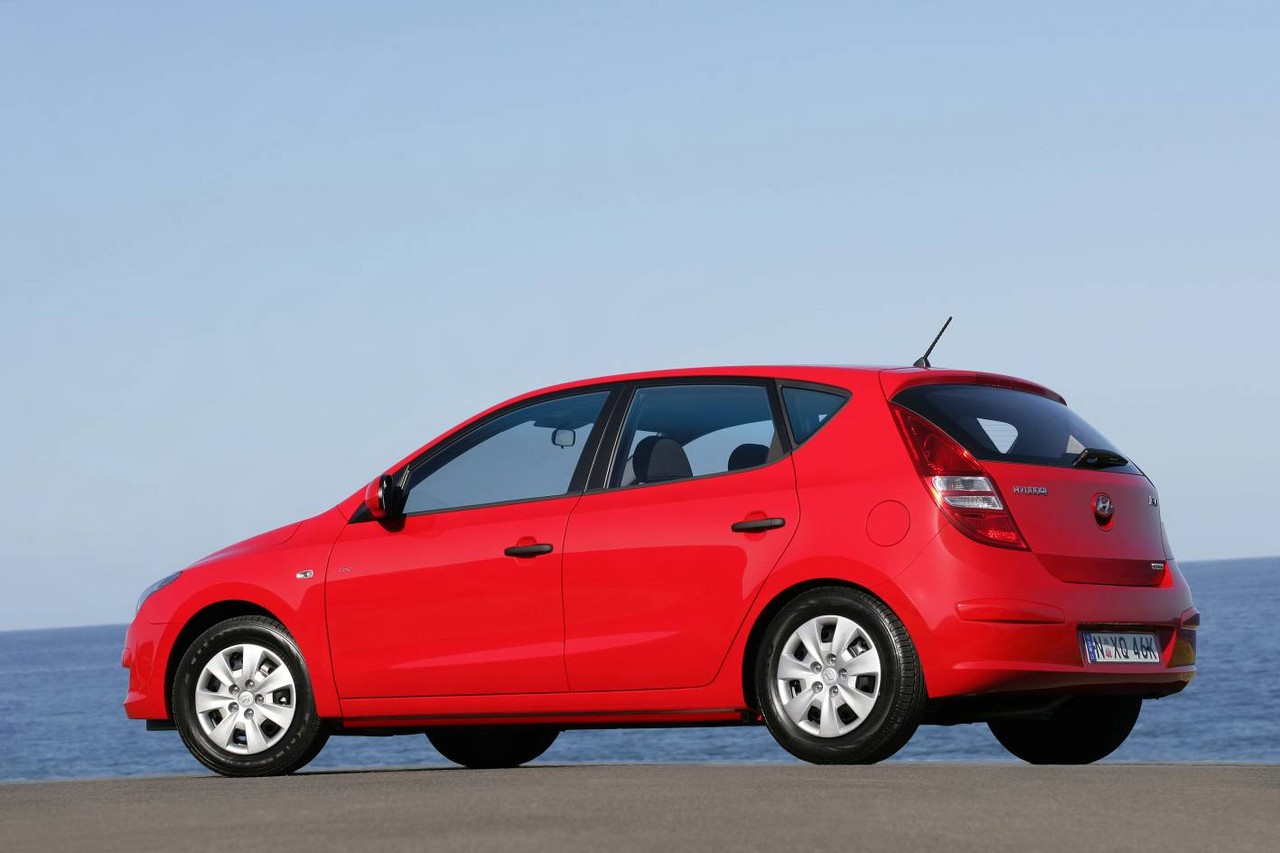
- Frugal turbo-diesel engine
- High standard of interior fit and finish
- Predictable handling
- Suspension lacks low-speed compliance
- Inconsistently weighted steering lacks feel
- Standard Kumho Solus tyres lack grip
- Lacks dynamics of Mazda BK Mazda3 and Ford Mk.2 Focus
Overview
Released in September 2007, the Hyundai FD i30 was a small, five-door hatchback. Manufactured in Ulsan, South Korea, the front-wheel drive i30 range initially consisted of the 2.0i and 1.6 CRDi variants, with SX, SLX and SR editions also available. In 2010, the range was expanded with the 1.6i, which was solely available in the SX edition. In September 2011, the 1.6-litre turbo-diesel underwent a minor upgrade and a six-speed manual transmission replaced the five-speed unit that was previously available.
G4FC, G4GC and D4FB engines
Of the engines,
- the 1.6-litre G4FC ‘Gamma’ petrol engine had an aluminium block and cylinder head, double overhead camshafts, four valves per cylinder and a compression ratio of 11.0:1;
- the 2.0-litre G4GC ‘Beta II’ petrol engine had a cast iron engine block, an aluminium cylinder head, double overhead camshafts, variable intake valve timing (CVVT), four valves per cylinder and a compression ratio of 10.0:1; and,
- the 1.6-litre D4FB ‘U’ diesel engine had a cast iron engine block, an aluminium cylinder head, common-rail injection, a variable geometry turbocharger, double overhead camshafts, four valves per cylinder and a compression ratio of 17.3:1.
Dimensions
Compared to the closely-related HD Elantra sedan , the i30 hatchback was 260 mm shorter (at 4245 mm), but the same width (1775 mm), 10 mm lower (1480 mm) and had the same length wheelbase (2650 mm).
Suspension and steering
The i30 had MacPherson strut front suspension and independent, ‘torsion blade’ multi-link rear suspension. The i30 was also fitted with electric power-assisted steering.
| Variant | Edition | Years | Engine | Trans. | Peak power | Peak torque |
|---|---|---|---|---|---|---|
| 1.6i | SX | 2010-12 | 1.6-litre petrol I4 | 4sp auto, 5sp man. |
89 kW at 6200 rpm | 153 Nm at 4200 rpm |
| 2.0i | SX, SLX, SR |
2007-12 | 2.0-litre petrol I4 | 4sp auto, 5sp man. |
105 kW at 6000 rpm | 186 Nm at 4600 rpm |
| Trophy | 2010, 2012 |
2.0-litre petrol I4 | 4sp auto, 5sp man. |
105 kW at 6000 rpm | 186 Nm at 4600 rpm | |
| 1.6 CRDi | SX, SLX |
2007-11 | 1.6-litre turbo-diesel I4 | 4sp auto, 5sp man. |
85 kW at 4000 rpm | 255 Nm at 1900-2750 rpm |
| 2011-12 | 1.6-litre turbo-diesel I4 | 4sp auto, 6sp man. |
85 kW at 4000 rpm | 260 Nm at 1900-2750 rpm |
Safety equipment
Initially, standard safety equipment for the i30 SX included dual front airbags, ABS, brake assist, electronic brake force distribution, active front seat head restraints, anti anti-submarining front seat pans and rear seat ramps, and front seatbelts with pretensioners and load limiters. Beyond this, the i30 SLX added front seat-mounted side (thorax) airbags and full-length curtain airbags, while the i30 SR was further equipped with electronic stability control and traction control. From June 2008, the i30 had an upgraded knee impact zone for improved occupant protection.
From October 2008, electronic stability control and traction control were made standard across the range, i.e. added to the SX and SLX. From October 2009, the i30 SX was fitted with front side (thorax) and curtain airbags.
Brakes
The i30 had 280 mm ventilated front brake discs and 262 mm solid rear discs.
Euro NCAP and ANCAP crash testing
In Euro NCAP crash testing , an i30 fitted with dual front airbags, front side airbags and curtain airbags achieved a four star adult occupant protection rating; while enough points (32.54) were scored for a five star rating, the i30 did not score enough points in the front impact test as the dummy driver’s knee indicated that there had been potentially injurious relative movement between the femur and the tibia and that structures in the dashboard could injury occupants’ knees and femurs. ANCAP’s methodology resulted in a score of 31.54 as it awarded two points for seatbelt reminders rather than Euro NCAP’s three points.
As a result of the upgraded knee impact zone (from June 2008), a similarly equipped i30 was re-tested and achieved a five star adult occupant protection rating with a score of 33.54 from Euro NCAP , although structures such as the steering column and ignition barrel still presented a hazard to the upper legs of drivers. ANCAP’s methodology resulted in a score of 32.54 as it awarded two points for seatbelt reminders rather than Euro NCAP’s three points.
ANCAP assessed that a post-June 2008 i30 with dual front airbags – but not side airbags or curtain airbags – had a four star adult occupant protection rating with a score of 27.1 out of 37; in the side impact test, there was a moderate risk of serious chest and abdomen injury for the driver.
Features: i30 SX, SLX and SR
Standard features for the i30 SX included 15-inch steel wheels, four speaker sound system with MP3/WMA-compatible CD player, auxiliary jack, USB input and iPod integration, air conditioning, 60/40 split and folding rear seats, steering wheel audio controls, power windows and heated mirrors, tilt and reach adjustable steering wheel, remote central locking, 12 volt power outlet, alarm and immobiliser.
Beyond this, the i30 SLX added 16-inch alloy wheels, six speaker sound system, front fog lights, driver’s seat height and lumbar adjustment, leather-wrapped steering wheel and gearshift, trip computer and ‘alloy-effect’ interior highlights; 2.0i variants were also fitted with cruise control.
Finally, the range-topping i30 SR was distinguished by its 17-inch chrome-finished alloy wheels with 225/45 tyres, six-disc CD player with digital external amplifier, leather trimmed seat bolsters, sports pedals cargo net, side skirts and rear spoiler.
October 2010: i30 update
In October 2010, the i30 underwent a minor update with integrated Bluetooth mobile phone connectivity fitted as standard; the SLX variant also received titanium-finish alloy wheels. Visually, these models could be identified by their black headlight bezels.
September 2011: i30 update
From September 2011, standard features were extended to include Bluetooth phone connectivity with audio streaming and auxiliary sound system inputs (i.e. 3.5mm/USB).
2010 and 2012 i30 Trophy editions
In August 2010 and April 2012, limited-run Trophy editions were released. Based on the 2.0i SX, the Trophy editions were distinguished by their 16-inch titanium-grey alloy wheels, cruise control, leather-wrapped steering wheel and gearshift, front fog lights, rear spoiler and ‘Trophy’ badges.
Brochure
Specifications
Related links
- Press release: Hyundai FD i30 – 1.6-litre engine (April 2010)
- Press release: Hyundai FD i30 Trophy (August 2010)
- Press release: Hyundai FD i30 update (October 2010)
- Press release: Hyundai FD i30 Trophy (April 2012)
- Wikipedia.org: Hyundai FD i30
